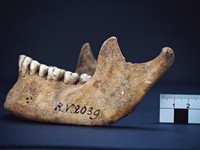Advertisement
Grab your lab coat. Let's get started
Welcome!
Welcome!
Create an account below to get 6 C&EN articles per month, receive newsletters and more - all free.
It seems this is your first time logging in online. Please enter the following information to continue.
As an ACS member you automatically get access to this site. All we need is few more details to create your reading experience.
Not you? Sign in with a different account.
Not you? Sign in with a different account.
ERROR 1
ERROR 1
ERROR 2
ERROR 2
ERROR 2
ERROR 2
ERROR 2
Password and Confirm password must match.
If you have an ACS member number, please enter it here so we can link this account to your membership. (optional)
ERROR 2
ACS values your privacy. By submitting your information, you are gaining access to C&EN and subscribing to our weekly newsletter. We use the information you provide to make your reading experience better, and we will never sell your data to third party members.
Biological Chemistry
Newscripts
The Iceman’s Genome, New-Age Foot Care
by Stephen K. Ritter
March 19, 2012
| A version of this story appeared in
Volume 90, Issue 12

The complete genome sequence of Ötzi the Iceman was reported on Feb. 28 in Nature Communications (DOI: 10.1038/ncomms1701). Recall that Ötzi lived about 5,300 years ago and was found mummified with an arrowhead stuck in his back in a snowy mountain pass in Italy in 1991.

According to the genomic analysis, Ötzi had brown eyes, type O+ blood, a predisposition to cardiovascular disease, possibly Lyme disease, and was lactose intolerant. That the iceman was lactose intolerant gives the Newscripts gang food for thought.
Lactose intolerance arises from the inability to produce enough of the enzyme lactase to metabolize lactose, the disaccharide sugar found in milk. Symptoms might not be noticeable, but at the extreme they involve unpleasant digestive distress after consuming milk or milk products.
Most mammals lose the ability to digest milk after weaning. But the gene coding for adult human lactase production arose in Europe about 7,000 years ago, perhaps as the result of evolutionary pressure stemming from the domestication of animals. Nowadays, most people in Europe, Australia, and North America have the gene and can tolerate lactose, whereas most folks living in Asia, Africa, and South America don’t have the gene.
So what’s the commotion about lactose intolerance, especially in the Western world, if most people don’t suffer from it? Washington Post columnist John Kelly put this red herring into perspective on March 4, when he announced that he is “lactose intolerant intolerant.” This is a new condition, Kelly writes, which has symptoms that include oculo-orbital rotation—better known as eye-rolling—whenever he hears someone say, “I’m lactose intolerant.” He adds that his new disease is treatable with red wine.
“I try to stay away from people who stay away from milk,” Kelly writes. “I mean, really. You can’t eat cheese? Or ice cream? Come on.” His tirade against lactose intolerance, he suggests, is sparked by people who have nothing better to do than blame mood swings and occasional body aches and skin eruptions on something they ate.
By the way, there are other evolutionary quirks like lactose intolerance. For example, about 20% of people can still wiggle their ears, a vestige of primate ears that turned toward sound. And the pinky toe, once useful for climbing trees, is now a mostly worthless and shrinking digit.
Despite all that is now known about Ötzi, it’s not clear whether he could wiggle his ears or whether he ever stubbed a pinky toe and swore like a sailor.
In other evolutionary news, scientists have discovered a new type of carnivorous plant in Brazil (Proc. Natl. Acad. Sci. USA, DOI: 10.1073/pnas.1114199109). The small spindly plant, Philcoxia minensis, grows in the sand and uses sticky underground leaves to trap and digest tiny nematodes, or roundworms.

Because the plant shares morphology and habitat with known carnivorous plants, the researchers had a hunch it might be a worm-eater. They tested their suspicions by feeding nematodes treated with nitrogen-15-labeled compounds to the plant and then detected 15N taken up by the plant’s leaves. It appears that phosphatase enzymes, common to carnivorous plants, play a role in digesting the nematodes to provide nutrition for P. minensis.

This finding suggests a few novel applications. For example, instead of using a pumice stone to remove dry, excess skin from the feet, or visiting a foot spa where tiny fish nibble away dead or diseased skin, anyone could plant a Zen garden with P. minensis and simply stick their feet in the sand while meditating. It might be possible to accelerate evolution by having the plants nibble away those useless pinky toes.





Join the conversation
Contact the reporter
Submit a Letter to the Editor for publication
Engage with us on Twitter